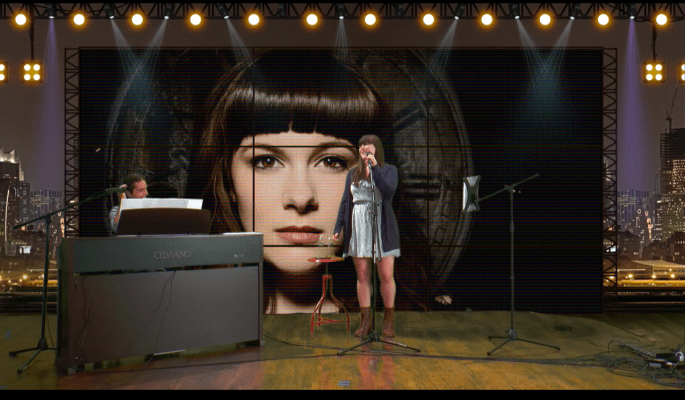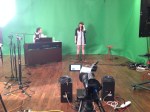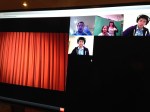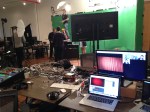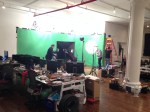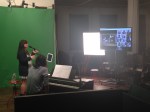In the past year, Turntable.fm has gone from a force in the digital music world, with around 420k MAUs and a Fred Wilson-helmed board, to a near-Dodo-level bird.
On September 11 of this year, the company shut down Piki.fm, which was meant to provide a more laid-back, asynchronous experience complementing Turntable.fm’s real-time, community driven environment, and took away the ability to upload music, which founder Billy Chasen says saves the company $20k a month.
According to comScore, Turntable is seeing 89K uniques, with a 52.9 percent decrease in uniques from August of 2012.
So what now?
I got a sneak peek at Turntable’s pivotal plan, and it all comes down to live performances. The idea is to replicate the live performance experience as closely as possible, from feeling like you’re surrounded by others to hearing the nuances of someone’s singing or playing live.
I witnessed a test performance, and it works a little bit like this:
Artists visit Turntable’s Soho office/studio and set up in front of a green screen. A camera records the performance live to viewers who have purchased tickets to the show. Turntable is requiring a minimum ticket price of $5, but artists can choose their own ticket price as long as it’s higher than the minimum. Artists generally spilt the profit 70 percent/30 percent with Turntable, but that is negotiable.
Where users are concerned, it’s a very different experience from the Turntable you’ve come to know. What once was a laid-back, play-in-the-background situation is now a live experience. You can snap pictures of yourself with the computer’s webcam, which are sent directly to a big screen in front of the audience. The artists can also see a real-time chat that’s happening among viewers, as well as direct questions posed from the audience.
This allows for real-time interaction between artists and their fans in a way that’s impossible during a concert.
Turntable aggregates the ambient noise from listeners’ mics (including applause) to play at the end of every song, so that users really get a sense of community while watching the performance.
Take a look at the UI:
But will this be enough?
Mimicking a live performance experience inside a computer screen is a huge, daunting task. Watching last night, there’s definitely an excitement that takes the viewer beyond an animated club or stadium with bobbing heads, but does it match that of a live show?
Red cups and sweaty bodies everywhere, the vibration coming from the speakers, the palpable energy of being in the same room as an artist you adore… These are the things that make concerts worth the price. Whether or not that will translate to a chatroom-esque environment remains to be seen.
However, there are advantages. When in your life will you have the opportunity to ask Justin Timberlake if he prefers boxers or briefs, or Lady Gaga what happened to her meat dress after she wore it? With Turntable Live, that possibility is, well, alive and well.
Chasen says that, financially, the company is alright to continue operation for now, with the majority of focus on Turntable Live. With the shutdown of Piki and reduced expenses from pairing back Turntable.fm (which will live on as a sort of in-between-shows lounge), the company will make it through the end of the year.
If Turntable Live picks up, that should create a valuable revenue stream, but if not, the company will be looking for funding by early next year. Chasen wouldn’t go into any more detail on financials.
Luckily, the new Turntable Live product doesn’t have a whole lot of competition in the space, as Turntable.fm did with Pandora, Spotify, Songza and others. Spacebar, a company that launched at Disrupt, has a similar proposition for consumers, allowing them to hear a live stream of a concert for a relatively cheap price.
However, Turntable Live requires that artists step out of their routine and schedule and enter the Turntable office downtown, shoot a live concert, interact, and all for ticket prices that viewers are willing to pay. That said, Turntable goes live unencumbered by competition, but this could be a bad thing as well.
It could be that nobody’s tried and succeeded at this because it’s possibly a bad idea.
Turntable Live launches on September 30, when the first headliners and prices will be announced. Chasen says the company plans to have at least one show per day from then on.
Here are some pics/Vines from the test performance:
